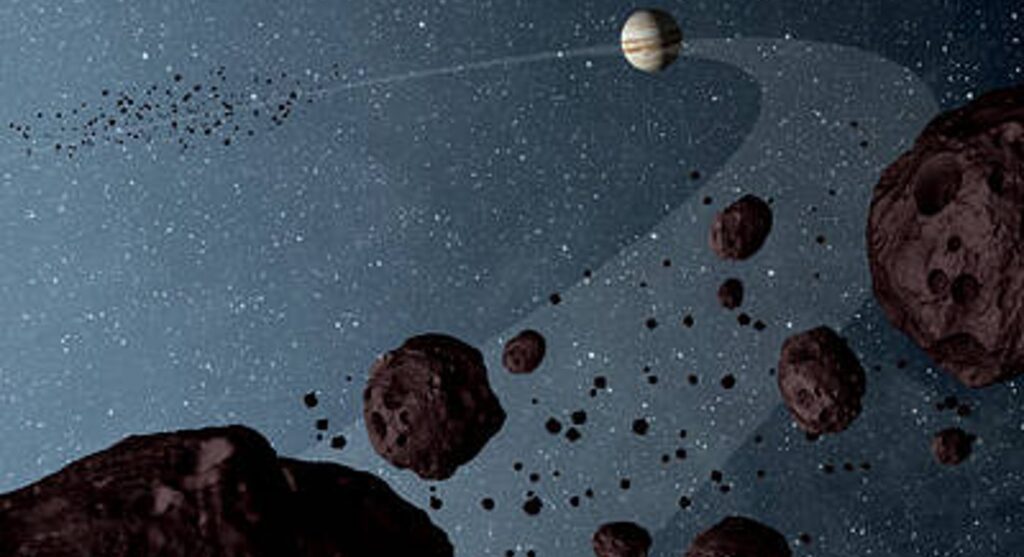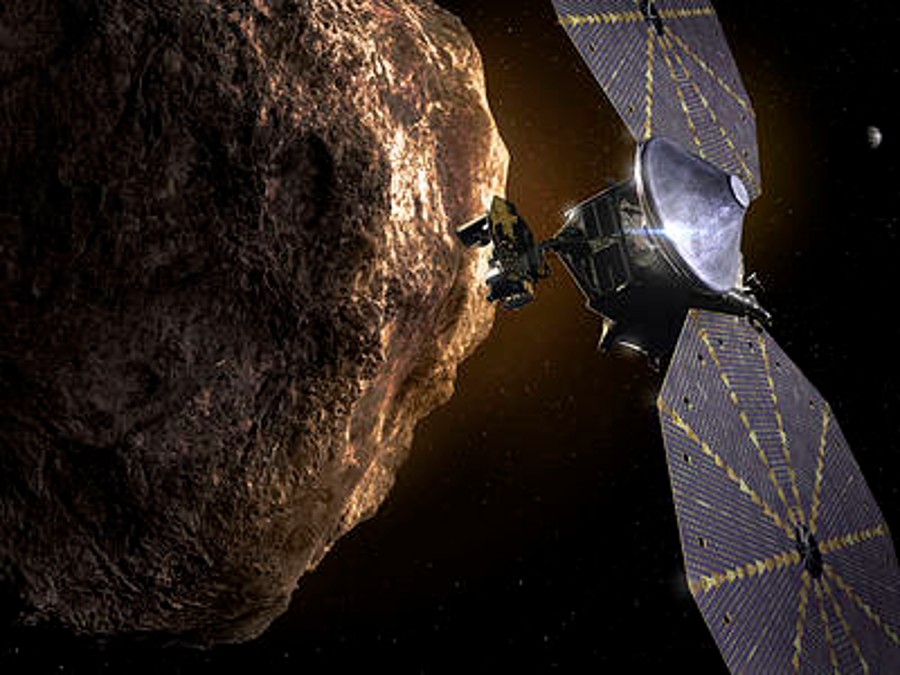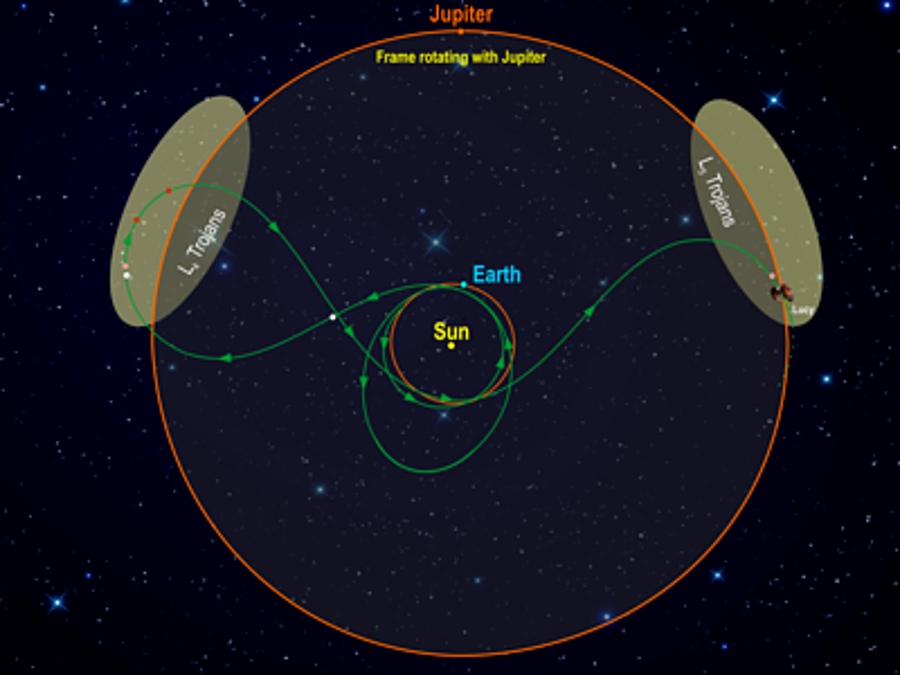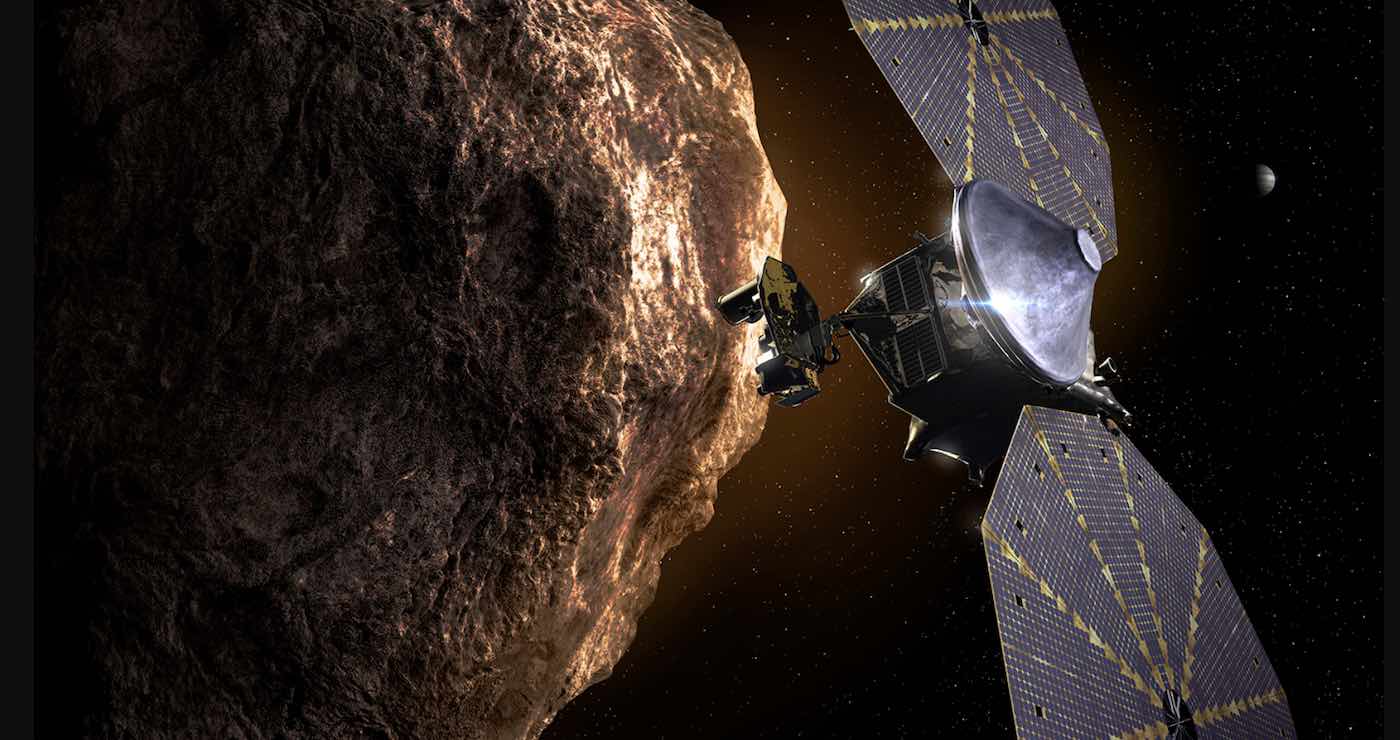
Tomorrow, on October 16th, NASA will launch the Lucy Mission into space—it will set a course for the Trojan Asteroids, with the aim of uncovering the earliest histories of our solar system.
Thought to contain the unused remains of the outer planets, the Trojans sit in two separate clouds called L4 and L5 around the same orbit as Jupiter.
Throughout its twelve-year mission, Lucy will make stops to eight different asteroids to study how, and of what, they are made.
Launching from Cape Canaveral, Florida aboard an Atlas V rocket, Lucy took its name from the fossilized ancestor on Earth that gave us insights into human evolutionary history, which, believe it or not, took its name from the Beatles song Lucy in the Sky with Diamonds. (The song was reportedly played loudly and repeatedly in the expedition camp all evening after the excavation team’s first day of work recovering the Lucy fossil.)
That piece of trivia was all the more special when Ringo Starr himself sent the Lucy team a special message of congratulations as launch day finally approached.
A historic mission
“Just like the Lucy fossil transformed our understanding of hominid evolution, the Lucy Mission will transform our understanding of Solar System evolution,” said Cathy Olkin, Dep. Principal Investigator on the Lucy team, on a recent interview with Planetary Radio.
No other space mission in history will have been launched to as many different destinations in independent orbits around our sun. Lucy will show us, for the first time, the diversity of the primordial bodies that built the planets nearest us.

The journey will take place, incredibly, without any thruster engine onboard, using only orbits, a little bit of solar-powered propulsion, but mainly through the use of Earth’s own gravity.
LOOK: NASA Helicopter Sends Stunning Photos of Martian Landscape from 33 Feet Up
There will be two rotations of the Earth that will act like the winding of a sling; a necessity to reach the outer solar system. This maneuver will be replicated a third time as the craft returns to Earth on its way to the second cloud of asteroids as part of its final destination, in total meandering four billion miles over its mission lifespan, utilizing two massive solar-panel wings to keep its instruments going.
A weekend on The Trojans
The Jupiter Trojans, also known as simply the Trojans, are a group of asteroids thought to represent leftover raw materials from the formation of the outer planets of Jupiter, Saturn, Uranus, and Neptune, or the shattered remains of planetesimals that were caught in the orbit of Jupiter as the gas giant entered its final stage of formation, though the latter theory has been confronted with major problems.
An interesting feature from what we know of the Trojans are that from object to object, their surface composition varies wildly, suggesting they came from different regions of the system and arrived at the orbit where they sit today, potentially due to gravitational attraction by Jupiter and Saturn as they migrated into their current orbits.
“These objects haven’t really changed much from when the planets assembled themselves,” said Hal Levison, Principal Investigator on the Lucy team. “As a result, by studying them we can figure out the physical conditions of the early solar system, as well as how the planets grew and how they moved around early on.”
Little is known about the minerals or materials contained within around 9,000 asteroids greater than 2km across that float in the L5 and L4 Swarms. The largest ones are all named after characters in the Saga of Troy, such as Hektor, Patroclus, Agamemnon, Achilles, and Mentor, which are the five largest.

Lucy will visit Eurybates and its tiny moonlet Queta in the L5 Swarm, along with Polymele, Leucus, and Orus (if anyone is wondering where they’re getting all these names, just check out Book 2 Line 7 of The Iliad) before crossing back across the solar system to the L4 Swarm and visiting Patroclus, which at 60 miles in diameter is the third-largest of all the Trojans, and its binary object Menoetius.
MORE: NASA Measures Interior of Mars for the First time, Revealing Huge Liquid Core
To study and photograph the Trojans, Lucy is bringing a spectrometer, which generates images of different colors based on what molecules the photographed object is made of—a powerful black and white camera like the one found on the Hubble Space Telescope, and a thermal imager.
For the super-space enthusiasts, early birds, or those at much later time zones, a live-stream on the NASA website of the Lucy launch will begin streaming at 5:AM EST.
Humanity will have to sit tight until the election cycle after next kicks up before pictures of Lucy’s quarry begin to arrive back home, but fortunately there will be dozens of other missions and discoveries to keep us occupied by then, not least from Perseverance and the soon-to-launch James Webb Space Telescope.
(WATCH the video for this story below.)
LAUNCH This Story Into Those Far Out News Feeds Now…




















